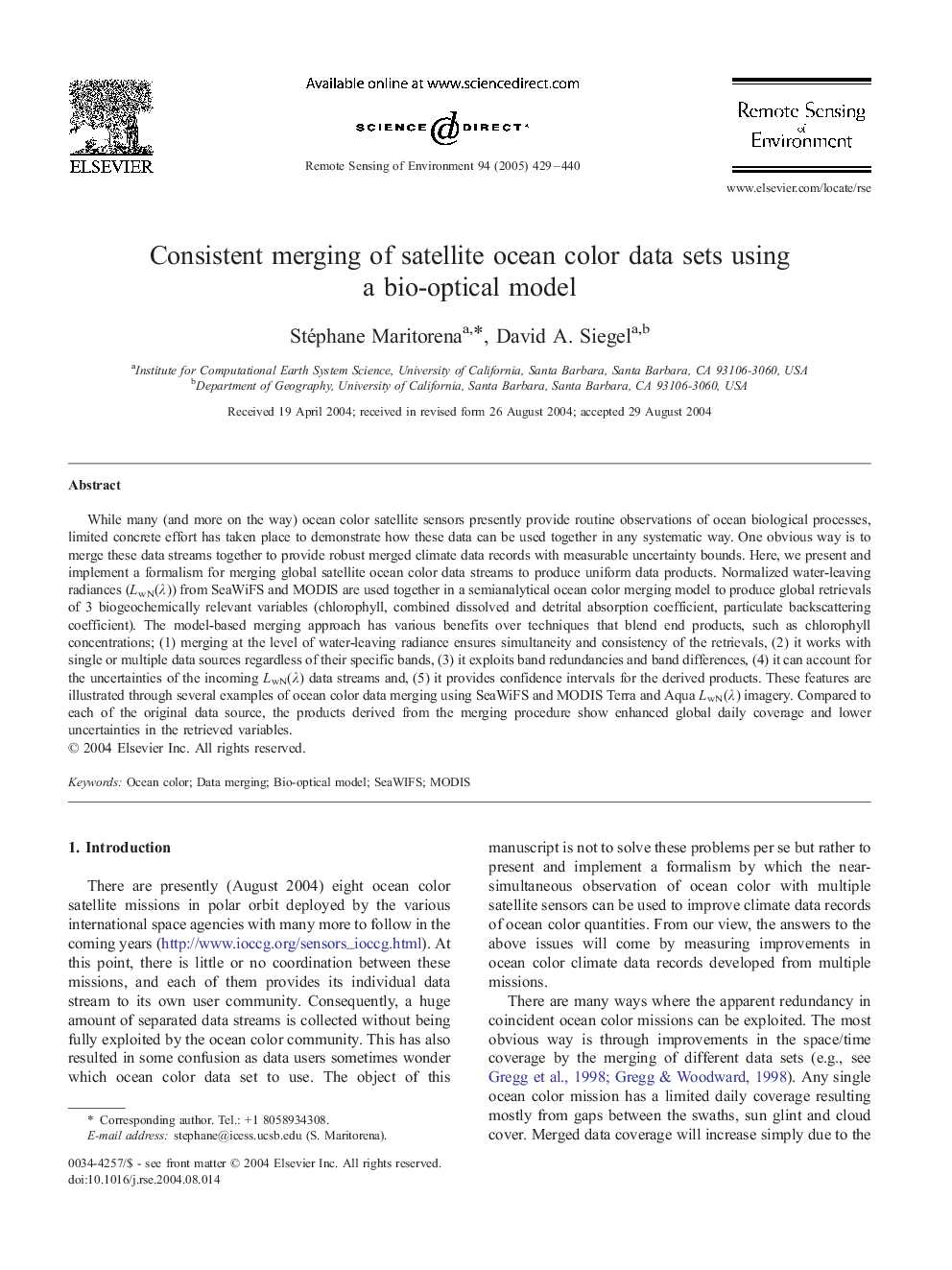| Article ID | Journal | Published Year | Pages | File Type |
|---|---|---|---|---|
| 10114308 | Remote Sensing of Environment | 2005 | 12 Pages |
Abstract
While many (and more on the way) ocean color satellite sensors presently provide routine observations of ocean biological processes, limited concrete effort has taken place to demonstrate how these data can be used together in any systematic way. One obvious way is to merge these data streams together to provide robust merged climate data records with measurable uncertainty bounds. Here, we present and implement a formalism for merging global satellite ocean color data streams to produce uniform data products. Normalized water-leaving radiances (LwN(λ)) from SeaWiFS and MODIS are used together in a semianalytical ocean color merging model to produce global retrievals of 3 biogeochemically relevant variables (chlorophyll, combined dissolved and detrital absorption coefficient, particulate backscattering coefficient). The model-based merging approach has various benefits over techniques that blend end products, such as chlorophyll concentrations; (1) merging at the level of water-leaving radiance ensures simultaneity and consistency of the retrievals, (2) it works with single or multiple data sources regardless of their specific bands, (3) it exploits band redundancies and band differences, (4) it can account for the uncertainties of the incoming LwN(λ) data streams and, (5) it provides confidence intervals for the derived products. These features are illustrated through several examples of ocean color data merging using SeaWiFS and MODIS Terra and Aqua LwN(λ) imagery. Compared to each of the original data source, the products derived from the merging procedure show enhanced global daily coverage and lower uncertainties in the retrieved variables.
Related Topics
Physical Sciences and Engineering
Earth and Planetary Sciences
Computers in Earth Sciences
Authors
Stéphane Maritorena, David A. Siegel,
